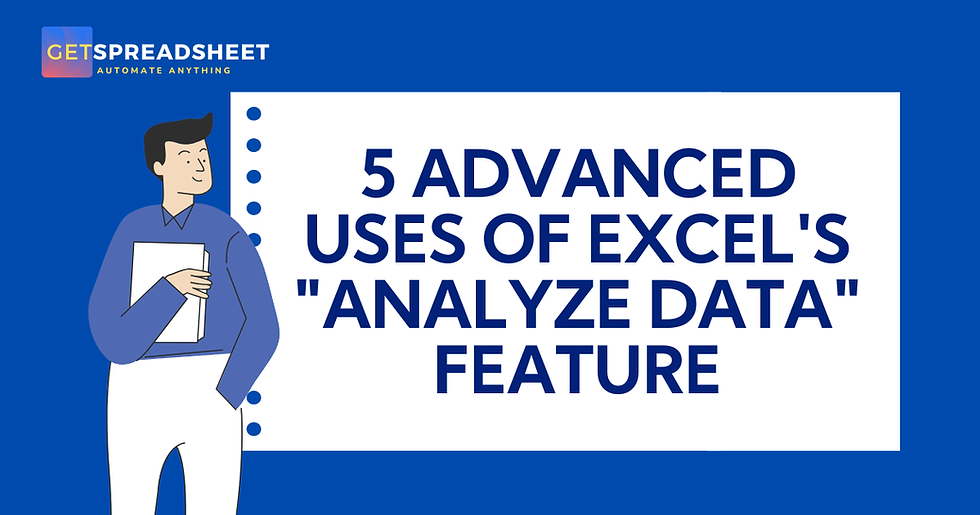5 BEST PRACTICES FOR TRAINING EXCEL COPILOT ON YOUR COMPANY'S DATA
- GetSpreadsheet Expert
- 2 days ago
- 2 min read
Effectively training Excel Copilot to work with your company's proprietary data is less about "training" the large language model (LLM) and more about ensuring your internal data is clean, secure, and easily accessible within the Microsoft 365 ecosystem. This process is often called grounding.

Maximizing Copilot: 5 Best Practices for Effectively Training Excel Copilot with Proprietary Business Data:
MANDATE FORMAT AS TABLE FOR ALL WORKBOOKS
Copilot needs structured data to analyze and generate accurate formulas and insights. Unstructured data ranges with merged cells, blank rows, or double headers confuse the AI.
Action: Format all data ranges used for analysis as official Excel Tables ($\text{Ctrl} + \text{T}$). Ensure every column has a clear, descriptive header (e.g., "Monthly_Revenue" instead of "M_R"). This creates the necessary structure for the AI to correctly identify and reference data fields.
IMPLEMENT STRICT ACCESS AND PERMISSIONS (GDPR Compliance)
Copilot adheres to the Principle of Least Privilege, meaning it can only access data the user running the prompt can access. This is your primary security control.
Action: Review your SharePoint and OneDrive permissions. Ensure that highly sensitive documents (like salary data or private financial models) are locked down to the smallest possible team. This prevents Copilot from accidentally pulling confidential information into a general user's summary.
USE SENSITIVITY LABELS AND ENCRYPTION
For data that cannot be locked down completely, you must classify its sensitivity.
Action: Leverage Microsoft Purview Information Protection to apply Sensitivity Labels to workbooks. Labels like "Highly Confidential" can automatically encrypt the file and restrict what Copilot is allowed to process or summarize, adding a crucial layer of data governance.
CENTRALIZED, CLEANSED DATA SOURCES (Grounding)
The quality of Copilot's output is directly tied to the quality of the data it references. Messy data leads to "hallucinations" or incorrect insights.
Action: Consolidate your most critical, frequently analyzed data (e.g., actuals, budgets) into centralized, clean Excel Tables stored in specific SharePoint folders. Train users to reference this single source of truth. Use Power Query to clean, standardize, and load this data before Copilot ever sees it.
DEVELOP A CUSTOM PROMPT LIBRARY
Training users on how to ask questions yields better results than simply letting them explore. Effective prompts must provide context, expectation, and data source.
Action: Create a centralized "Prompt Library" for your team with templates for common tasks. For example, a good prompt is not "Analyze sales," but "Using the Sales_2025_Actuals table, compare the year-over-year revenue growth by region and create a PivotChart for the executive summary." This guides the AI to a high-quality, actionable output.
Effectively leveraging Copilot requires organizations to focus on data hygiene and strong governance. By ensuring that proprietary data is structured, properly secured, and easily accessible via clean tables and defined permissions, you establish the necessary foundation for AI to deliver accurate, confidential, and high-value insights, transforming Copilot into a trustworthy extension of your analytical team.



Comments